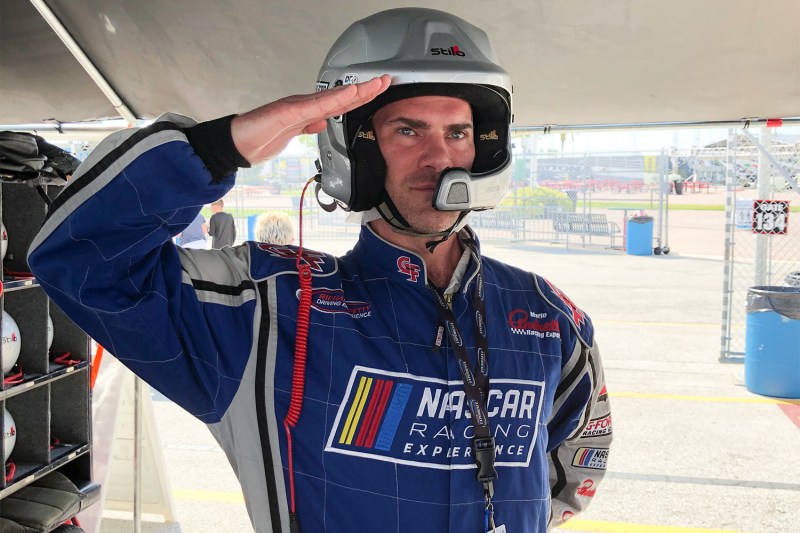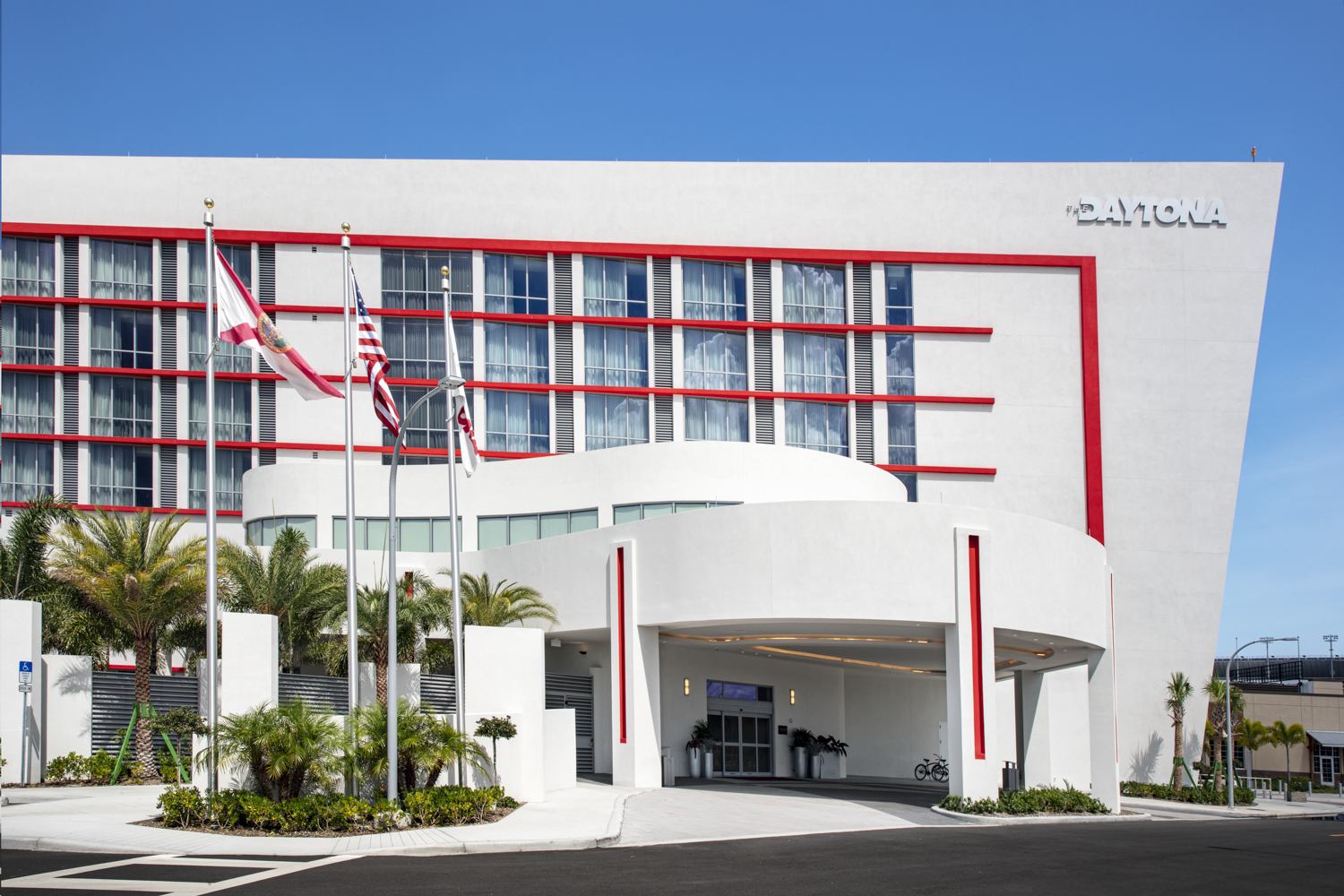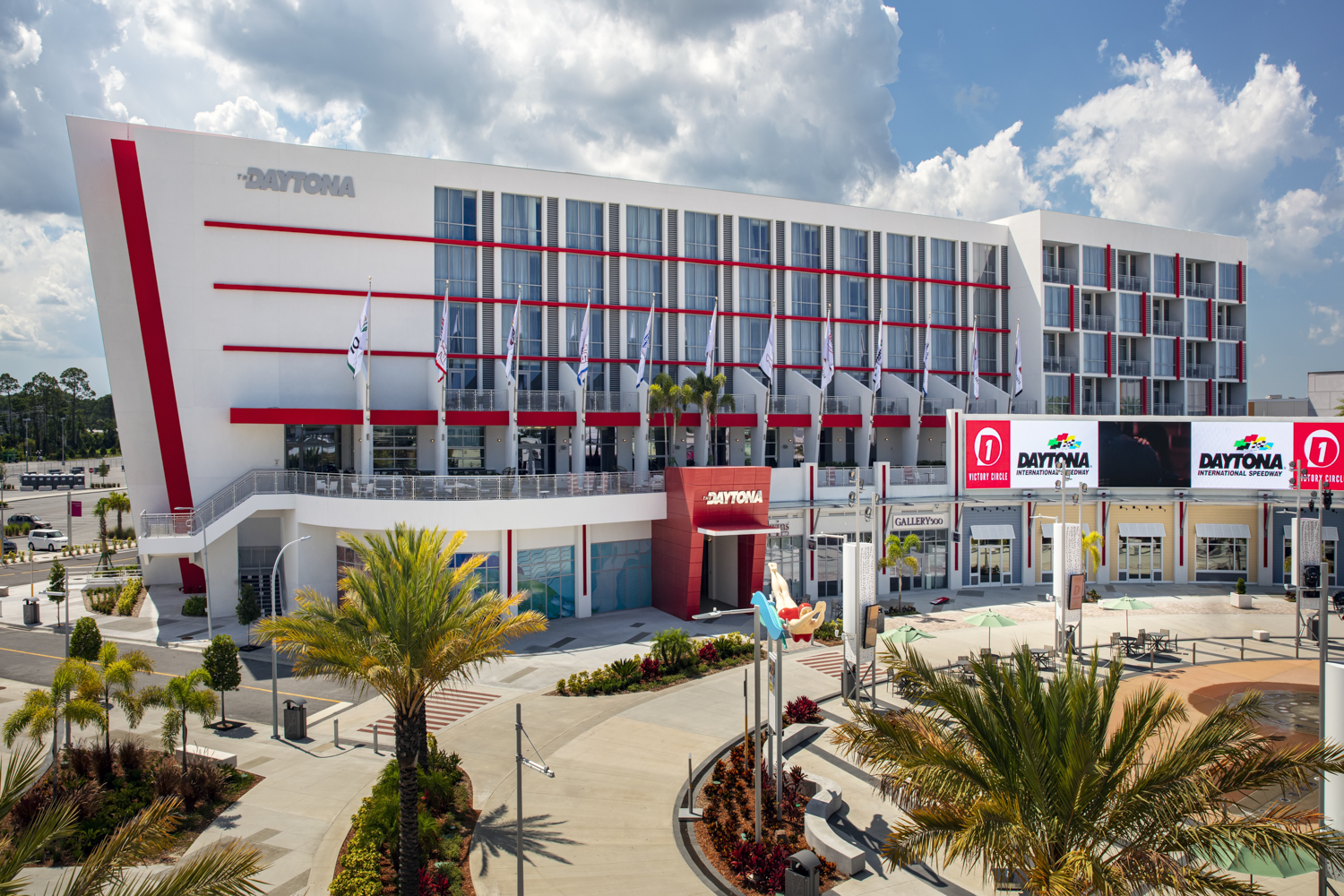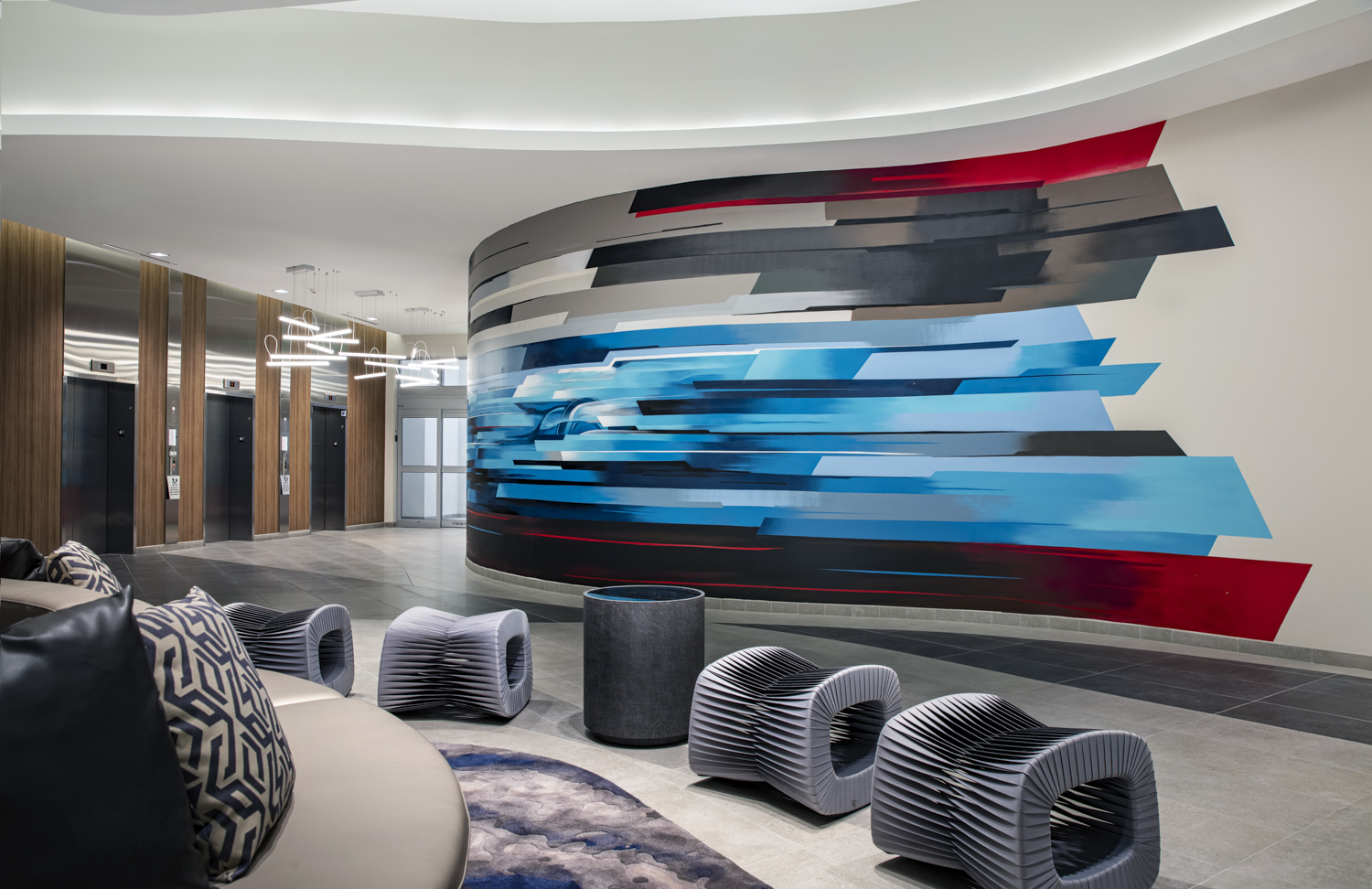
I’ve driven a lot of fast cars in the past few years. Earlier this year, I had a Corvette up above 120 miles per hour on the track. I’ve been behind the wheel of Ferraris, Maseratis, BMWs, and the list goes on. So I figured I could handle a race car just fine, and my heartbeat didn’t so much as quicken as I climbed through the window of a NASCAR stock car on the track of the Daytona International Speedway.
But as I sped toward the first turn and saw the 31-degree bank looming in front of me, I did have one brief heart flutter and a moment of doubt. As I recall, my thoughts were something like this: “Holy shit.”
NASCAR racing proper was born out of need (more or less), with the early drivers having cut their teeth running illicit liquor during prohibition. Today, there are 23 NASCAR race tracks, with the oldest still in operation being the Martinsville Speedway in Virginia. Daytona International Speedway is broadly considered to be the best racing experience in the sport, and the races themselves are but one of the reasons to visit the area. Driving a race car yourself is a pretty good draw if you ask me. We’ll get into that in a moment.
As I sped toward the first turn and saw the 31-degree bank looming in front of me, I did have one brief heart flutter and a moment of doubt. As I recall, my thoughts were something like this: “Holy s***.”
If you’re going to visit Daytona Beach, you’re doing it wrong if you don’t stay at the brand-new hotel, The Daytona, opened just this year and literally a stone’s throw (assuming you are an Olympic javelin thrower, anyway) from the Speedway itself. The hotel is part of the Marriott Autograph Collection, a line of elevated resort-style destinations always carefully curated to fit into their environment. The lobby of The Daytona features rotating installations of race cars and memorabilia from famous drivers. Its rooms feature drawer pulls and doorknobs made to look like parts of an automobile and there are carbon fiber details within the furnishings. Even the little notepad by the phone fits in, designed to look like a speeding ticket.
If you can’t make it to Daytona Beach, you can enjoy an on-track stock car racing experience at any of 16 speedways around the country that offer the official NASCAR Racing Experience. But I strongly urge you to make the trip to this veritable holy land of racing. The sheer size of the Daytona International Speedway alone is staggering, and the history and gravitas that comes with it make driving on the track a surprisingly powerful experience beyond the raw power of the vehicles themselves.
Before you get into a NASCAR race car, you get a long safety briefing, you put on a burn-resistant suit, and you get fitted for a helmet. If not before, it’s by this point that you are realizing this is not going to be a go-kart style of experience. To get into a NASCAR car, you have to climb through the driver side window. Then you are secured with a five-point harness and safety net is strapped into place. You are told about the fire suppression system and taught how to remove the steering wheel and take down the safety net should you need to exit the car after an unfortunate incident.
So again, all pretty serious stuff. But I was still calm albeit excited as the speakers built into my helmet crackled with my spotter’s voice. He was telling me it was my turn to head out onto the track.
I have no idea how fast I was going as I approached that first turn. NASCAR vehicles feature a massive tachometer but have no speedometer — drivers measure their speed based on RPMs and experience. In fact, when speedometers were briefly installed in some race cars, drivers drove an average of 10 miles per hour slower, stupefied by how fast they were actually going.

My heart was racing as I entered the steeply banked curve, but all at once something amazing happened: I realized that physics really does work. Driving at high speed around a curve set at a steep angle feels as natural as taking a flat turn at lower speeds. Despite the fact that I would later be told I was driving at around 140 mph (OK, my top speed that day was 139.89 miles per hour), once comfortable in the car, I felt like I was going not much above a fast highway pace for most of the eight laps I completed on the Daytona International Speedway.
My heart was racing as I entered the steeply banked curve, but all at once something amazing happened: I realized that physics really does work.
It was not until the drive was over, my knuckles returned to their usual flush, and I was having a drink and talking with some other writers who had also completed the course, that it occurred to me just how hard real racing must be. At 140 MPH on an empty track, I still had to give 100% of my focus to keep the car in control. Professional drivers are often going 200 miles per hour and are contending with dozens of other vehicles as they race.
Even if you’re not a NASCAR fan, I can tell you now from personal experience that’s it wrong to not call this a sport. The cars do a lot of the work, sure, but there is an intense physicality involved. I was sweaty and strained after eight laps. These guys? They do 200 mph.
Where You Can Try the NASCAR Racing Experience:
- Talladega Superspeedway, Alabama
- ISM Raceway, Arizona
- Auto Club Speedway, California
- Dover International Speedway, Delaware
- Daytona International Speedway, Florida
- Homestead Miami Speedway, Florida
- Atlanta Motor Speedway, Georgia
- Chicagoland Speedway, Illinois
- Kansas Speedway, Kansas
- Kentucky Speedway, Kentucky
- Michigan International Raceway, Michigan
- New Hampshire Motor Speedway, New Hampshire
- Las Vegas Motor Speedway, Nevada
- Charlotte Motor Speedway, North Carolina
- Myrtle Beach Speedway, South Carolina
- Texas Motor Speedway, Texas
- Richmond Raceway, Virginia










